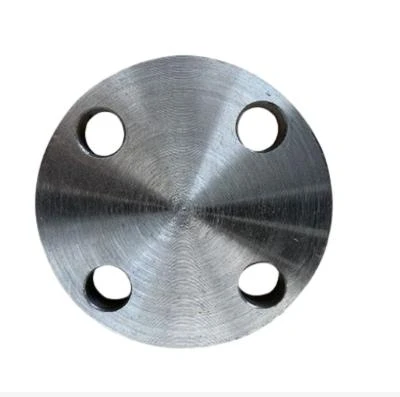-
Cangzhou Yulong Steel Co., Ltd.
-
Phone:
+86 13303177267 -
Email:
admin@ylsteelfittings.com
- English
- Arabic
- Italian
- Spanish
- Portuguese
- German
- kazakh
- Persian
- Greek
- French
- Russian
- Polish
- Thai
- Indonesian
- Vietnamese
- Zulu
- Korean
- Uzbek
- Hindi
- Serbian
- Malay
- Ukrainian
- Gujarati
- Haitian Creole
- hausa
- hawaiian
- Hebrew
- Miao
- Hungarian
- Icelandic
- igbo
- irish
- Japanese
- Javanese
- Kannada
- Khmer
- Rwandese
- Afrikaans
- Albanian
- Amharic
- Armenian
- Azerbaijani
- Basque
- Belarusian
- Bengali
- Bosnian
- Bulgarian
- Catalan
- Cebuano
- China
- China (Taiwan)
- Corsican
- Croatian
- Czech
- Danish
- Esperanto
- Estonian
- Finnish
- Frisian
- Galician
- Georgian
- Kurdish
- Kyrgyz
- Lao
- Latin
- Latvian
- Lithuanian
- Luxembourgish
- Macedonian
- Malgashi
- Malayalam
- Maltese
- Maori
- Marathi
- Mongolian
- Myanmar
- Nepali
- Norwegian
- Norwegian
- Occitan
- Pashto
- Dutch
- Punjabi
- Romanian
- Samoan
- Scottish Gaelic
- Sesotho
- Shona
- Sindhi
- Sinhala
- Slovak
- Slovenian
- Somali
- Sundanese
- Swahili
- Swedish
- Tagalog
- Tajik
- Tamil
- Tatar
- Telugu
- Turkish
- Turkmen
- Urdu
- Uighur
- Welsh
- Bantu
- Yiddish
- Yoruba

Nov . 19, 2024 04:52 Back to list
Understanding Welding Socket Weld Fittings and Their Applications in Piping Systems
Understanding Welding Socket Weld Fittings An Essential Guide
Welding socket weld fittings are an integral part of modern piping systems, playing a crucial role in ensuring the integrity and reliability of systems in various industrial applications. They are particularly popular in high-pressure environments, such as chemical plants, oil refineries, and power plants, where safety and performance are paramount. This article will explore the characteristics, advantages, applications, and considerations associated with welding socket weld fittings.
What are Weld Socket Fittings?
Welding socket weld fittings are a type of pipe fitting used to create a strong, leak-proof connection between pipes. Unlike threaded fittings, which are attached by screwing together, socket weld fittings are designed to be welded to the ends of pipes. This welding process typically involves a full penetration weld, which creates a bond that is often as strong, if not stronger, than the pipe itself.
These fittings come in various shapes, including elbows, tees, reducers, and flanges, enabling them to facilitate changes in direction, diameter, or branching in piping systems. They are typically made from carbon steel, stainless steel, or alloy steel, which allows them to withstand high pressures and temperatures.
Advantages of Socket Weld Fittings
1. Strength and Durability The primary advantage of using socket weld fittings is their robust construction. The welding process creates a seamless transition between the fitting and the pipe, reducing the chances of leaks or failures under pressure.
2. Reduced Risk of Corrosion Since the fittings are welded rather than screwed, there are fewer crevices for corrosive substances to accumulate compared to threaded connections. This is particularly beneficial in environments where fluids can lead to rapid deterioration of materials.
3. High Pressure Ratings Socket weld fittings are designed to handle high pressure and temperatures, making them ideal for industries such as oil and gas, where demands on the piping systems are significant.
4. Space Efficiency Socket weld fittings are generally compact, allowing for tighter installations and saving valuable space in industrial settings.
5. Ease of Inspection The solid weld joint facilitates easier inspection and maintenance, allowing technicians to ensure system integrity without extensive disassembly.
Applications of Welding Socket Weld Fittings
Welding socket weld fittings are used extensively in various industries, including
welding socket weld fittings

- Oil and Gas They are essential in transportation pipelines, refineries, and storage tanks where secure and durable connections are crucial for operational safety.
- Chemical Processing Their resistance to high temperatures and corrosive chemicals makes them ideal for processing plants handling aggressive substances.
- Power Generation In power plants, socket weld fittings are utilized in boiler piping and steam systems, where reliability is vital for efficiency and safety.
- Water Treatment They are also used in water treatment facilities, where durability and corrosion resistance are paramount to meet environmental regulations.
Considerations When Using Socket Weld Fittings
While socket weld fittings offer numerous advantages, a few considerations can affect their usage
1. Welding Skills The quality of the weld significantly impacts the performance of socket weld fittings. Proper welding techniques and skilled personnel are essential to ensure strong bonds.
2. Cost Although socket weld fittings provide excellent durability, they can be more expensive than other types of fittings, such as threaded options. Budget considerations may influence the choice of fittings in certain projects.
3. Size Limitations Socket weld fittings are typically used in smaller pipe sizes (usually up to 4 inches). For larger diameters, alternatives like butt weld fittings are preferred.
4. Inspection Regulations In high-stakes industries, adherence to strict inspection and maintenance regulations is crucial. Knowledge of local codes and standards in the selection and use of fittings is necessary.
Conclusion
Welding socket weld fittings are an essential component of robust piping systems, offering exceptional strength, durability, and reliability. Their application across various industries highlights their versatility and importance in high-pressure and corrosive environments. As industries continue to evolve, understanding the nuances of these fittings will ensure the creation of safe and efficient piping networks, contributing to the overall success of industrial operations. By considering the advantages and potential drawbacks of socket weld fittings, engineers and technicians can make informed decisions that align with the specific requirements of their projects.
Latest news
-
ANSI 150P SS304 SO FLANGE
NewsFeb.14,2025
-
ASTM A333GR6 STEEL PIPE
NewsJan.20,2025
-
ANSI B16.5 WELDING NECK FLANGE
NewsJan.15,2026
-
ANSI B16.5 SLIP-ON FLANGE
NewsApr.19,2024
-
SABS 1123 FLANGE
NewsJan.15,2025
-
DIN86044 PLATE FLANGE
NewsApr.19,2024
-
DIN2527 BLIND FLANGE
NewsApr.12,2024
-
JIS B2311 Butt-Welding Fittings LR/SR 45°/90° /180°Seamless/Weld
NewsApr.23,2024











